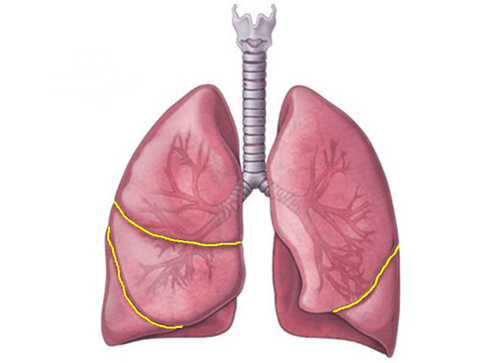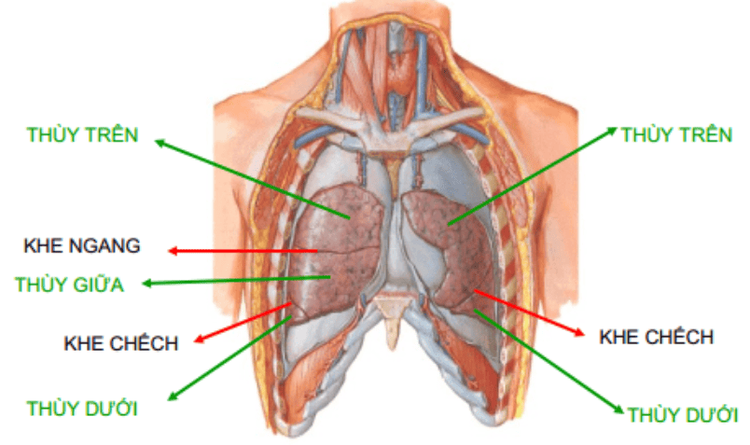This is an automatically translated article.
Lungs are organs of the respiratory system. Their function is to carry oxygen into the blood and release carbon dioxide from the blood. Each lung is divided into lobes separated by pleura in the form of a fissure. The right lung has upper, middle, and lower lobes, but the left lung has only upper and lower lobes.
1. What is a lobe of the lung?
The lungs are divided into lobes by the pleura in the form of a fissure. These fissures allow the lungs to expand. The lungs consist of five lobes. The left lung has an upper and a lower lobe. Meanwhile, the right lung has an upper lobe, a middle lobe and a lower lobe.
The lobes are characterized by a discrete connection with the first division of the bronchial tree and behind the main bronchi of the two lungs (this is the lobar bronchus). The blood, nerve, and lymphatic supply from the junctions to each lobe is linked to the other lobes. This makes the lobes functionally relatively independent in the lung.
Furthermore, the lobes are divided into bronchopulmonary segments which is the same as the volume of the lung with an organized arrangement relative to each other in one lobe and independent of the similar function of the other lobes. With division of the bronchi, each segment is divided into secondary pulmonary lobules.

Các khe nứt tạo ranh giới giữa các thùy phổi
2. Types of lung lobes
The main bronchi enter the lungs at the junction and branch into secondary bronchi called lobes. Here it will supply air to each lobe of the lung. The bronchial lobe branch becomes a tertiary bronchus also known as the bronchial segment, and air is supplied to the further dividing segments of the lung lobe known as the bronchopulmonary segment. Each bronchopulmonary segment has its own bronchial segment and its own artery. Dissect this segment to locate pathogenic processes in the lung. A segment is a separate unit that can be surgically removed without severely affecting surrounding tissue.
2.1. Upper lobes The upper lobes of each lung are the top pieces also known as the superior lobes. Each lobe receives air from its own branch of the bronchial tree (bronchial lobe). In the lungs, these bronchi are divided into smaller tubes. The smallest of these tubes are called bronchi. The bronchi control gas exchange with the alveoli, the small air sacs in the lungs.
Each lobe of the lung has the same function of bringing oxygen into the blood and removing carbon dioxide. Parts of a lung lobe or an entire lobe are removed if treating lung conditions such as lung cancer, tuberculosis, and emphysema.
2.2. Middle lobe Only the right lung has a middle lobe. This lobe is located between the upper and lower lobes of the lung. The function of the middle lobe is similar to that of the upper lobe.

Các loại thuỳ phổi trong cơ thể con người
2.3. Lower lobe Both the left and right lungs have lower lobes. It is roughly the same size as the upper lobe of each lung. Oblique fissure divides the upper and lower lobes of the lung. However, in the right lung there is an additional transverse fissure separating the middle lobe. Oblique fissures are usually found along the sixth rib. Although uncommon, it is possible to separate the lower lobe from the rest of the lung and transplant it into the lung of someone else whose lungs are not functioning or are not functional. This is the proposed alternative to whole lung transplantation from cadavers. It is a unique alternative because the donor does not need to die to donate the lower lobe of the lung.
Vinmec International General Hospital is a prestigious address for specialized medical examination and treatment with international standard services. Especially at Vinmec, there is a team of experienced doctors and nurses who have many years of medical examination and treatment, which will bring satisfaction to customers.
Customers can directly go to Vinmec Health system nationwide to visit or contact the hotline here for support.
References: healthline.com, sciencedirect.com













